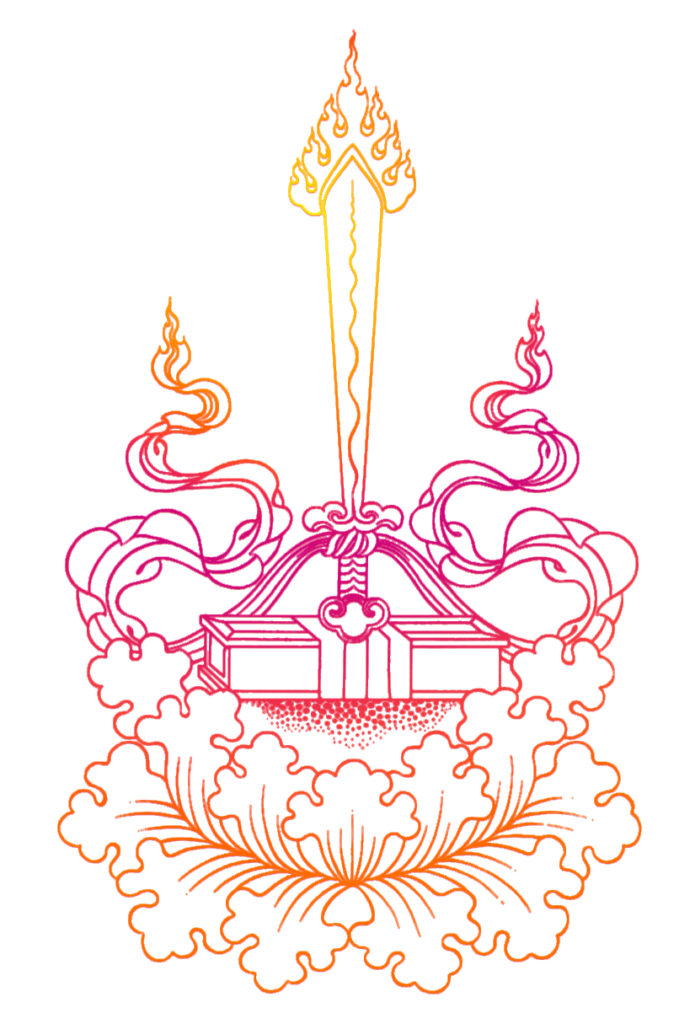Reports From The Mandala
Head Lama of TNMC

Over the past decade, the Nyingma Mandala of Organizations has expanded dramatically and in unexpected ways. Existing organizations have continued their activities on behalf of the Dharma and all sentient beings, typically intensifying their efforts. At the same time, at least nine new organizations have been formed, adding new dimensions to the founding Head Lama’s vision.
In the reports that follow, we lay out recent developments throughout the mandala and introduce the work of our new organizations. We start with the work of TNMC, where the Head Lama is most directly involved: Yeshe De, Odiyan, the Light Foundations, and the Sarnath Institute. From there we move on to describe the structure and mission of the Nyingma Association of Mandala Organizations (NAMO), founded in 2011.
We go on to lay out the recent work of the organizations that belong to NAMO. As a structure for presenting this wealth of developments, we start with the organizations located in Sonoma County, then turn to developments in Berkeley, and finally report on the expanding efforts of our international centers, under the direction of Nyingma Centers.
Yeshe De Project
In 1978, Tarthang Tulku embarked on a remarkably ambitious project: reprinting the entire Tibetan Buddhist Canon in 120 volumes. Together with its eight-volume Research Catalog and Bibliography, the Nyingma Edition helped ensure that the fundamental teachings of Tibetan Buddhism would remain intact and available for future generations.
In 1983, soon after these path breaking projects were completed, Rinpoche founded the Yeshe De Research and Translation Project, and soon afterwards it published Ancient Tibet. In the next few years, the focus of the project shifted, and it became known as the Yeshe De Text Preservation Project. For much of the
1980s and into the 1990s, Project staff worked intensively on collecting, compiling, and printing a reprint edition of the teachings of the Nyingma School, published as Great Treasures of Ancient Teachings, in 727 volumes.
In the late 1980s, a new focus emerged, as staff began typesetting texts in Tibetan, using a newly developed digital font that even today remains unmatched in its capacity for typesetting accurately and elegantly the full range of Tibetan glyphs used in the Mantrayana.
Starting in the 1990s and continuing until that time, Yeshe De focused almost all of its efforts on collecting, typesetting, printing, and distributing Tibetan texts, sending them to India to give away to participants at the annual World Peace Ceremony in Bodhgaya. As the project intensified, annual shipments increased in size to as many as 400,000 books, containing ten thousand titles in twelve hundred volumes: close to four million books in all. In recent years, responding to requests from recipients, we have started to print mostly Western-style volumes, making use of advances in technology to be able to present the text in more accessible formats.
In the early years, Rinpoche focused on collecting, printing, and distributing the texts that were most rare and in greatest danger of being lost. Once this task was largely accomplished, and as more and more monastic centers and schools began to attend the World Peace Ceremony, the focus shifted to providing lamas and
schools with a complete curriculum that could be used for study and practice.
In recent years, Rinpoche has focused on distributing in large numbers copies of the Tibetan Buddhist Canon, which continues to be available only in limited quantities. We have now printed five copies of the Kanjur (the teachings of the Buddha): the original Nyingma Edition, which reproduces the Derge Canon, the Narthang Edition, the Tog Palace Edition (printed in Brazil), a Derge edition in western format distributed in 2013, and a western format Derge edition now being completed for distribution in China. The Nyingma Edition, the Narthang Edition, and each of the typeset Derge editions also include the vast collection known as the Tanjur, the classic commentaries on the teachings of the Buddha. The most recent set printed at Dharma Mangalam Press at Ratna Ling (2012–13) consists of 133 volumes for the Kanjur and 275 volumes for the Tanjur.
Now that the canonical editions are complete, we have turned to collections of works by the all-knowing Longchenpa (about 20 volumes) and the great master Lama Mipham (about 40 volumes), as well as a collection of commentaries on Madhyamaka and Prajnaparamita by great masters of the Sakya school.
We have also printed for distribution at the next World Peace Ceremony two volumes that Rinpoche considers of special importance for these times. One is a collection of works by Khen Lob Cho Sum (the abbot Shantarakshita, the master Padmasambhava, and the Dharma king Trisong Detsen). These three leaders are the irreplaceable founding fathers of the Dharma in Tibet, and Rinpoche has emphasized the importance of honoring their contribution. The second volume, compiled by Rinpoche under the title Tusam Ngondo, consists of guidance on how to engage the teachings.